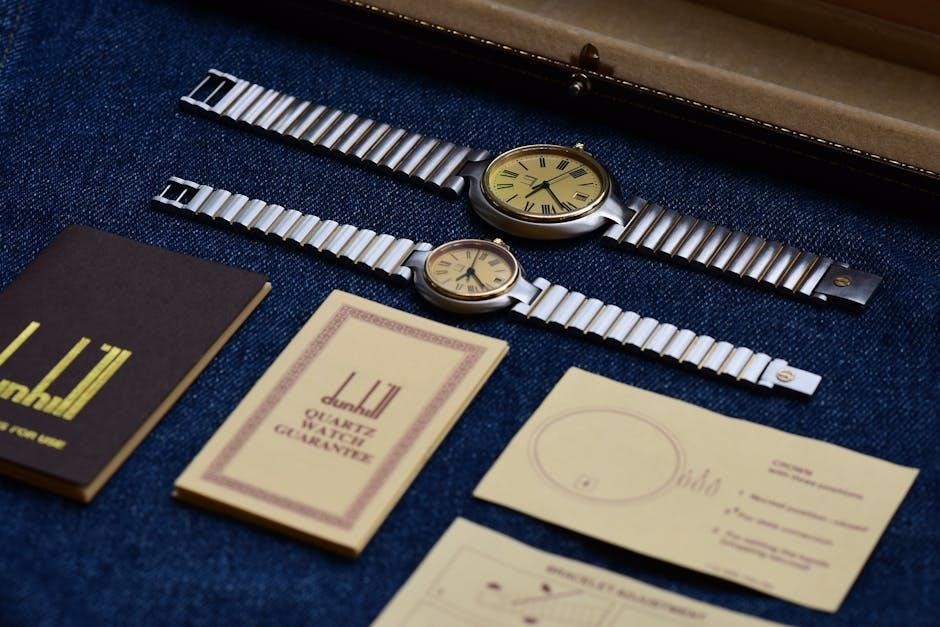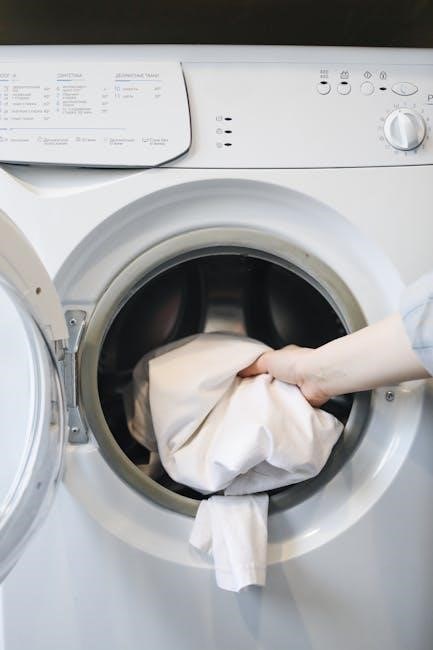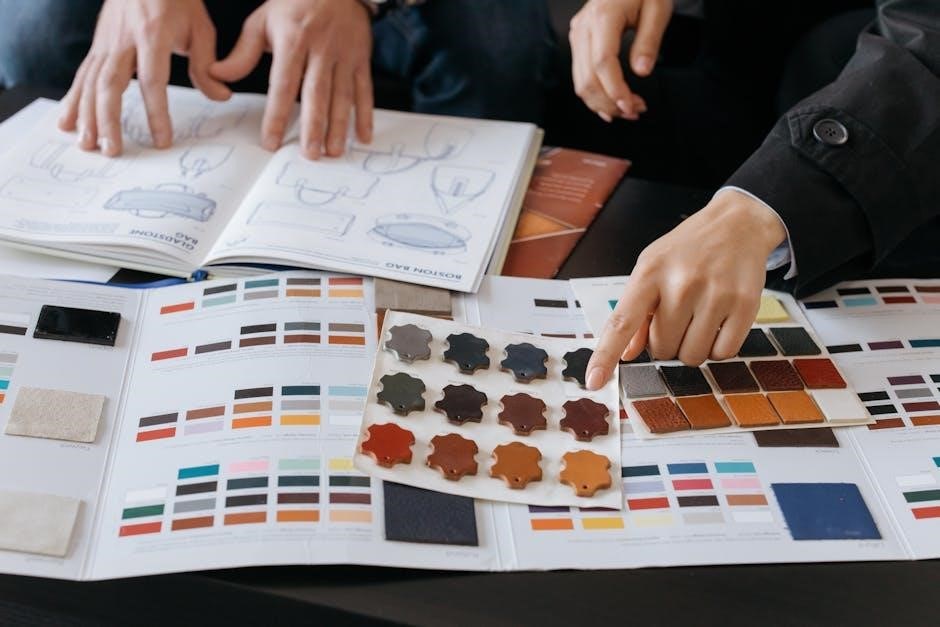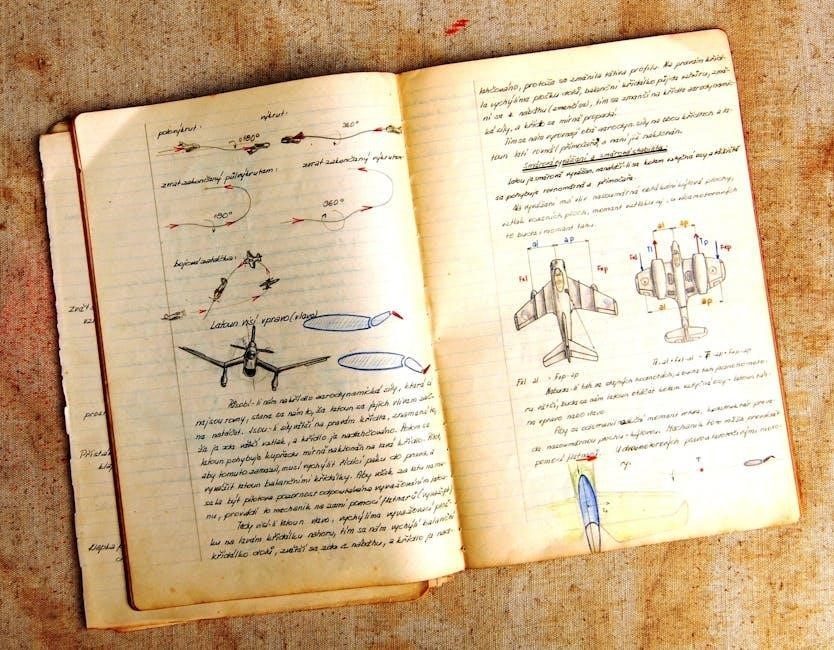
The Infiniti Q50 manual swap is a growing trend among enthusiasts, offering improved driving engagement and control for those seeking a more hands-on experience.
1.1 Overview of the Infiniti Q50 and Its Transmission Options
The Infiniti Q50 is a sport sedan known for its powerful engine options, including a 3.7-liter V6 and later models featuring a 3.0-liter twin-turbo V6. While the Q50 comes standard with an automatic or CVT transmission, enthusiasts often explore manual swap options to enhance performance and driver engagement. The Q50’s platform, shared with the G37, offers potential for aftermarket modifications, making it a popular choice for those seeking a more hands-on driving experience. The availability of paddle shifters in some trims highlights the car’s sporty DNA, further fueling interest in manual conversions.
1.2 What is a Manual Swap and Why is it Popular?
A manual swap involves replacing the Q50’s automatic transmission with a manual gearbox, typically sourced from compatible models like the G37. This modification is popular among driving enthusiasts who crave better control and a more engaging experience. The direct connection between driver and vehicle enhances acceleration and responsiveness, making it a sought-after upgrade for performance enthusiasts. Additionally, the manual swap allows drivers to fully exploit the Q50’s powerful engine capabilities, fostering a more immersive driving experience that aligns with the car’s sporty design.
1.3 Brief History of Manual Transmissions in Infiniti Vehicles
Infiniti has historically offered manual transmissions in select models, catering to driving enthusiasts. The G37, for instance, featured a 6-speed manual option, aligning with its sporty DNA. However, the Q50 shifted toward automatic transmissions, reflecting market trends. Despite this, the G37’s manual gearbox compatibility with the Q50 has inspired swaps, allowing drivers to reconnect with the tactile driving experience. This legacy of manual transmissions in earlier Infiniti models has fueled the popularity of such modifications, keeping the spirit of driver engagement alive among enthusiasts.

Feasibility of a Q50 Manual Swap
A Q50 manual swap is feasible but requires careful planning and compatibility checks. The process involves replacing the automatic transmission with a manual unit, often sourced from compatible models like the G37, ensuring proper integration with the vehicle’s systems. Enthusiast communities and specialists provide valuable insights and support, making the swap achievable for skilled DIYers or experienced mechanics. However, it demands thorough research and preparation to ensure success and reliability.
2.1 Can You Swap an Automatic Q50 to Manual?
Swapping an automatic Q50 to a manual transmission is possible but challenging. The Q50 shares compatibility with the G37’s 6-speed manual transmission, making it a viable option. However, the process requires specialized tools, mechanical expertise, and careful integration with the vehicle’s systems. While achievable, it’s not a project for beginners. Enthusiasts must research thoroughly, ensuring compatibility and addressing potential technical hurdles. Proper planning and execution are crucial to avoid costly mistakes and ensure a smooth transition to manual driving.
2.2 Key Considerations Before Starting the Swap
Before attempting a Q50 manual swap, consider the complexity and cost. The project requires mechanical expertise and specialized tools. Compatibility of parts, especially the transmission, is crucial. Research the 6-speed manual from the G37, which is a common choice. Budget for unexpected expenses and ensure access to a skilled technician or detailed guides. Time and workspace are also important factors. Lastly, evaluate insurance and warranty implications, as modifications may affect coverage. Proper planning ensures a smoother and more successful swap experience overall.
2.3 Common Myths About Manual Swaps in Modern Cars
Manual swaps in modern cars like the Q50 are often misunderstood. One myth is that modern electronics make swaps impossible, but with proper modifications, they can work seamlessly. Another myth is that manual transmissions are obsolete, yet enthusiasts continue to seek them for better control. Some believe it’s too expensive, but with careful planning, costs can be managed. Lastly, many think it’s only for experts, but with detailed guides and community support, skilled DIYers can succeed. These myths shouldn’t deter those passionate about driving engagement and customization.

Parts and Tools Required for the Swap
A manual transmission swap for the Q50 requires a compatible transmission, such as the 6-speed, along with tools like wrenches, sockets, and possibly a valve body.
3.1 Transmission Options for the Q50
The Q50 supports various manual transmission options, including the 6-speed unit from the G37, known for its durability and compatibility. Additionally, enthusiasts have explored aftermarket options like the Muncie M20, offering enhanced performance. These transmissions are often chosen for their smooth shifting and reliability. Proper research and compatibility checks are essential to ensure a seamless integration with the Q50’s existing drivetrain and engine configuration, particularly the 3.7-liter V6. This ensures optimal performance and driving experience.
3.2 Necessary Components for a Successful Swap
A successful Q50 manual swap requires several key components, including a compatible manual transmission, such as the 6-speed unit from the Infiniti G37. Additional parts include a clutch kit, flywheel, and driveshaft. The shifter assembly and mounting hardware must also be sourced to ensure proper installation. Electronics, like the ECU, may need modifications to support manual operation. These components ensure the swap is both functional and reliable, preserving the Q50’s performance while adding the desired manual driving experience.
3.3 Tools and Expertise Needed
Performing a Q50 manual swap requires specialized tools and mechanical expertise. Essential tools include a transmission jack, wrenches, and screwdrivers for disassembly and reassembly. A lift is recommended for better access, though jack stands can suffice with caution. Expertise in transmission systems, clutch installation, and electronic modifications is crucial. Familiarity with diagnostic software may be needed for ECU recalibration. Experience with manual transmissions and understanding of modern automotive electronics are highly beneficial, making this project suitable for skilled DIYers or professional mechanics.

Step-by-Step Guide to the Q50 Manual Swap
A detailed, sequential process involving transmission removal, manual installation, and system recalibration ensures a smooth transition to a manual driving experience for the Q50.
4.1 Preparing the Vehicle for the Swap
Preparing the Q50 for a manual swap involves draining transmission fluid, disconnecting electrical connectors, and removing key components like the shifter and center console. Ensure all necessary tools and parts, such as the manual transmission, clutch, and flywheel, are ready. Consult a service manual for specific instructions and safety precautions. Inspect the vehicle’s current transmission and surrounding systems to identify potential issues. This step ensures a smooth transition and minimizes downtime during the swap process.
4.2 Removing the Automatic Transmission
Removing the automatic transmission from the Q50 requires careful planning and tools. Start by draining the transmission fluid and disconnecting the torque converter. Next, detach the transmission lines and electrical connectors. Remove the transmission mounts and crossmember bolts. Use a transmission jack to support the unit while lowering it. Ensure the vehicle is securely lifted on jack stands. This process demands precision to avoid damage or injury. Properly label all disconnected components for reinstallation later. A professional or experienced mechanic is recommended for this step due to its complexity and safety risks.
4.3 Installing the Manual Transmission
Installing the manual transmission in the Q50 requires precision and care. Begin by positioning the manual transmission under the vehicle, ensuring proper alignment with the engine and chassis. Use a transmission jack to guide it into place. Secure the transmission mounts and crossmember bolts, tightening them evenly. Reconnect the driveshaft, clutch linkage, and gear shifter. Ensure all electrical connectors are properly attached. Double-check the transmission fluid level and test the clutch pedal operation. A test drive is essential to verify smooth shifting and functionality.
4.4 Reconnecting and Testing the System
After installing the manual transmission, reconnect the electrical connectors, clutch slave cylinder, and gear shifter. Ensure the clutch system is properly bled to eliminate air bubbles. Start the engine and check for any leaks or unusual noises. Test the clutch pedal operation and gear shifts to ensure smooth engagement. Take the vehicle for a test drive on a quiet road to verify proper functionality, checking for smooth acceleration and seamless shifting. This step is crucial to confirm the success of the manual swap and ensure the system operates as intended.

Challenges and Potential Issues
Manual swaps on the Q50 often face challenges like transmission compatibility, electronic system adjustments, and clutch integration. Ensuring proper software calibration and wiring modifications is essential.
5.1 Common Problems Encountered During the Swap
Common issues during a Q50 manual swap include transmission compatibility problems, unexpected repairs like valve body replacements, and challenges with wiring adjustments. Ensuring proper clutch integration and resolving software calibration issues are critical. Additionally, sourcing the correct transmission and parts can be difficult, and labor costs may rise due to the complexity of the swap. Enthusiasts often underestimate the time and expertise required to resolve these issues effectively.
5.2 Electronic and Software Modifications Needed
Electronic and software adjustments are crucial for a Q50 manual swap. The car’s computer must be reprogrammed to recognize the manual transmission, ensuring proper engine and gearbox communication. This may involve updating the ECU, recalibrating sensors, and modifying the vehicle’s software to disable automatic features. Additionally, integrating components like clutch switches and adjusting throttle response might be necessary. These modifications require specialized tools and expertise to ensure compatibility and optimal performance, making professional assistance highly recommended for enthusiasts attempting the swap.
5.3 Ensuring Compatibility with Other Vehicle Systems
Ensuring compatibility with other vehicle systems is vital for a successful Q50 manual swap. The drivetrain, ECU, and sensors must harmonize with the new transmission. Compatibility checks for the flywheel, clutch, and shifter are essential, as improper alignment can lead to mechanical failure. Additionally, the vehicle’s software must recognize and adapt to the manual setup, ensuring proper communication between the engine and transmission. Testing each system post-swap is critical to identify and resolve any integration issues, guaranteeing a seamless driving experience.

Community and Support for the Q50 Manual Swap
Online forums, Facebook groups, and enthusiast communities provide invaluable support for Q50 manual swaps, offering advice, troubleshooting, and sharing experiences with parts like 25549-6AV0A.
6.1 Online Forums and Resources
Online forums and social media groups dedicated to the Q50 manual swap provide extensive resources, including step-by-step guides, part recommendations, and troubleshooting tips from experienced enthusiasts. These platforms allow users to share their journeys, resolving issues like transmission compatibility and software modifications. For instance, specific part numbers such as 25549-6AV0A for paddle shifters are frequently discussed, offering practical solutions. Additionally, members often highlight reputable shops and specialists, fostering a collaborative environment that supports the swap process from start to finish.
6.2 Expert Mechanics and Specialists
Expert mechanics and specialists play a crucial role in the Q50 manual swap, offering tailored guidance and hands-on expertise. Many enthusiasts rely on these professionals to navigate complex aspects like transmission compatibility and software recalibrations. Shops with experience in manual swaps often provide custom solutions, ensuring seamless integration of components. Specialists also contribute to online forums, sharing detailed insights and troubleshooting tips, which aids the DIY community. Their deep understanding of the Q50’s systems is invaluable, helping enthusiasts achieve a successful and reliable manual transmission conversion.
6.3 Success Stories and Case Studies
Several enthusiasts have successfully completed the Q50 manual swap, sharing their experiences online. One notable case involves a 3.7-liter V6 Q50 now featuring a 6-speed manual transmission, showcasing a clean and efficient build. Another example highlights a detailed VR30 transmission swap, emphasizing the importance of proper parts and planning. These success stories provide valuable insights and motivation for others, demonstrating that with the right knowledge and resources, a manual swap can enhance both performance and driving satisfaction for Q50 owners.

Cost and Maintenance Considerations
The Q50 manual swap involves significant costs, including transmission and parts expenses. Long-term maintenance is often lower for manuals, but initial investment can be substantial, requiring careful budgeting.
7.1 Estimated Cost of the Manual Swap
The estimated cost of a Q50 manual swap can range widely, depending on the source of the transmission and other components. A used manual transmission, such as the 6-speed unit from a G37, may cost between $2,000 to $4,000. Additionally, labor costs for the swap can add $2,000 to $4,000, depending on the shop’s expertise. Other expenses include a clutch kit, flywheel, and potential modifications to the wiring or ECU, which can add another $1,000 to $2,000. Overall, the total cost can range from $5,000 to $10,000 or more, depending on the approach and quality of parts used.
7.2 Long-Term Maintenance Costs
Long-term maintenance costs for a manual-swapped Q50 are generally lower than those for automatic transmissions. The clutch, a wear item, may need replacement every 50,000 to 100,000 miles, costing around $1,000 to $2,000. Gear oil changes are relatively inexpensive and recommended every 30,000 to 60,000 miles. Other components, such as the transmission seals and bearings, are durable and rarely require replacement unless driven under extreme conditions. Overall, manual transmissions are more cost-effective in the long run, making them a favorable choice for enthusiasts seeking reliability and lower maintenance expenses.
7.3 Insurance and Warranty Implications
Modifying your Q50 with a manual swap can impact insurance and warranty coverage. Insurance premiums may increase due to the car’s unique modification, potentially raising costs as specialized parts could be more expensive. Additionally, if the swap is not performed to standard, it might lead to denied insurance claims in case of mechanical issues. Warranty-wise, a manual swap will likely void the manufacturer’s warranty, leaving owners to cover repair costs out of pocket. Future resale value could also be affected, as some buyers may view the swap positively while others might be deterred. Consulting with insurance providers and understanding warranty terms is crucial before proceeding with the modification.

Performance and Driving Experience
A manual swap enhances the Q50’s performance by improving acceleration and driver control, offering a more engaging and responsive driving experience behind the wheel.
8.1 Improved Performance with a Manual Transmission
Swapping to a manual transmission in the Q50 boosts performance by enabling quicker gear shifts and better control over acceleration. This direct connection enhances responsiveness, especially during spirited driving. The manual setup allows drivers to exploit the engine’s power band more effectively, resulting in faster 0-60 mph times compared to the automatic. Additionally, the absence of torque converter slip contributes to crisper acceleration, making the Q50 feel more agile and precise on the road or track.
8.2 Enhanced Driver Engagement and Control
A manual transmission in the Q50 significantly heightens driver engagement, offering a more tactile and immersive driving experience. The direct connection between the driver and the vehicle allows for precise control, especially during cornering or acceleration. Shifting gears manually enhances the sense of connection to the car, making every drive more engaging and rewarding. This level of control is particularly appealing to driving enthusiasts who value the hands-on nature of manual driving over the convenience of an automatic.
8.3 Fuel Efficiency and MPG Changes
Switching to a manual transmission in the Q50 may not significantly impact fuel efficiency, as the car’s MPG remains comparable to its automatic counterpart. However, driving habits play a crucial role, as manual transmissions can slightly improve efficiency in skilled hands. Aggressive driving, on the other hand, may lower MPG. While the swap isn’t primarily for fuel savings, it offers a balance of performance and economy, making it a viable option for enthusiasts who prioritize driving experience without sacrificing practicality.

Legal and Safety Considerations
Ensure the Q50 manual swap meets safety standards and complies with local regulations. Proper inspections and adherence to legal requirements are essential to avoid penalties and ensure roadworthiness.
9.1 Ensuring the Swap Meets Safety Standards
Ensuring the Q50 manual swap meets safety standards is crucial. Proper installation of the manual transmission and components is essential to maintain vehicle reliability and prevent mechanical failure. All modifications must comply with local safety regulations to avoid legal issues. Additionally, thorough testing of the braking system, clutch operation, and gear engagement is necessary to ensure safe operation on the road. Always consult professional mechanics to guarantee adherence to safety protocols and industry standards.
9.2 Legal Requirements for Modified Vehicles
When performing a Q50 manual swap, it’s essential to comply with legal requirements for modified vehicles. Modifications must pass local safety inspections and emissions testing. Ensure all changes meet regulatory standards, as failure to comply can result in fines or registration denial. Additionally, notify your insurance provider about the swap to maintain coverage. Always check state-specific laws regarding transmission modifications to avoid legal complications. Proper documentation and adherence to these requirements ensure your vehicle remains street-legal and safe to operate.
9.4 Warranties and Liability After the Swap
Performing a Q50 manual swap may void your manufacturer’s warranty, as it alters the vehicle from its original configuration. Liability for any issues arising from the swap typically falls on the owner. Modifications can complicate warranty claims, so it’s crucial to review your policy before proceeding. Additionally, ensure your insurance provider is aware of the changes, as undisclosed modifications can lead to denied claims. Always consult with legal and automotive experts to understand potential risks and responsibilities post-swap.

Future of Manual Swaps in the Automotive Industry
Despite rising automation, manual swaps remain popular among enthusiasts, driven by a passion for driver engagement. The trend underscores the enduring appeal of manual transmissions in modern cars.
10.1 Trends in Manual Transmission Popularity
Manual transmissions are experiencing a resurgence in popularity, particularly among driving enthusiasts. While automatics dominate the market, many car enthusiasts still prefer the tactile experience of shifting gears. The Q50 manual swap has gained traction as a way to enhance driving engagement. This trend reflects a broader shift toward preserving the driver-car connection in an increasingly automated automotive landscape. Enthusiasts are driving demand for manual transmission options, even as manufacturers focus on automatic and CVT technologies. The availability of aftermarket parts and online communities further fuels this movement, making manual swaps more accessible and appealing to car enthusiasts worldwide.
10.2 Impact of Electric Vehicles on Manual Swaps
The rise of electric vehicles (EVs) is reshaping the automotive landscape, potentially impacting the popularity of manual swaps like the Q50 manual swap. As EVs gain market share, traditional manual transmissions may become less relevant, given EVs’ typical reliance on single-speed or multi-speed automatic systems. However, enthusiasts continue to value the unique driving experience manuals provide, even as the industry shifts toward electrification. This tension underscores the importance of preserving manual transmission culture, especially in performance-oriented vehicles like the Q50.
10.3 The Role of Enthusiasts in Keeping Manuals Alive
Enthusiasts play a vital role in preserving the culture of manual transmissions, even as the automotive industry shifts toward automation. Their passion for hands-on driving experiences drives interest in projects like the Q50 manual swap. Online forums, DIY tutorials, and community events showcase their dedication to maintaining and celebrating manual transmissions. By sharing knowledge and inspiring others, enthusiasts ensure that the tradition of manual driving remains alive, even in the face of advancing technology and electrification trends.
The Q50 manual swap offers enthusiasts a unique way to enhance their driving experience, blending modern technology with classic control, creating a truly rewarding project for car lovers.
11.1 Final Thoughts on the Q50 Manual Swap
The Q50 manual swap is an impressive feat for enthusiasts, offering a unique blend of modern technology and classic driving engagement. While challenges like electronic modifications and compatibility issues exist, the sense of accomplishment and enhanced control make it rewarding. The clean builds and performance improvements showcased by pioneers like Gray demonstrate the potential of this project. For those passionate about driving, the Q50 manual swap represents a way to breathe new life into their vehicle, keeping the spirit of manual transmissions alive in an evolving automotive landscape.
11.2 Encouragement for Enthusiasts and DIYers
The Q50 manual swap is a testament to the ingenuity and passion of automotive enthusiasts. While the process is complex, the sense of accomplishment and enhanced driving experience make it worthwhile. For DIYers, this project offers a chance to showcase creativity and mechanical skills. The supportive online communities, forums, and specialists provide invaluable resources to overcome challenges. Embrace the journey, stay persistent, and remember that the joy of driving is amplified by the personal touch of a manual transmission. Your efforts will inspire others to keep the spirit of manual driving alive.
11.3 The Future of Manual Transmissions in Modern Cars
While automatic and CVT transmissions dominate modern vehicles, the manual swap community keeps the tradition alive. Enthusiasts play a crucial role in preserving manual driving culture, even as electric vehicles rise. The Q50 manual swap exemplifies this dedication, showing that manual transmissions still resonate with driving purists. As the automotive industry evolves, niche markets may emerge for manual transmissions, catering to those who value tactile driving experiences. The passion of DIYers and enthusiasts ensures that manuals remain relevant, even in an increasingly automated world.